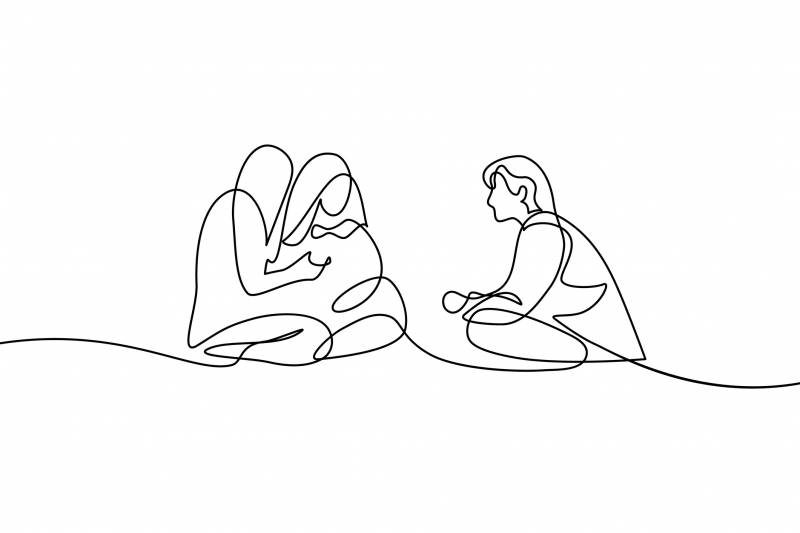“There’s really tremendous evidence that the negatives far outweigh the benefits,” said Shirrell, an assistant professor at George Washington University’s Graduate School of Education and Human Development. He’s referring to data showing that student suspensions are linked to a lower likelihood of graduating high school and going to college as well as a higher likelihood of interactions with the police. Missing school, overall, even as little as 10 days in a school year, jeopardizes chances of graduating. Other studies show that suspended students become less engaged in school, leading to low performance without necessarily correcting the behavior that caused the suspension in the first place.
“If we’re trying to be more inclusive, what are we teaching young children by using exclusionary discipline practices?” asked Britton. “It’s not just that children are missing school or less likely to graduate, but it’s also what [they are] learning and internalizing about themselves.”
With a transition back to learning in school buildings, many students have experienced trauma from the COVID-19 pandemic and it’s showing up as alarming behavioral issues at school. “Our children are in crisis,” said Britton. Learning from Black, Asian and Latinx teachers about what is going well in their classrooms, especially in regards to discipline, helps all educators develop ways to better cope with how trauma is playing out in today’s students.
Strategies for shaping school culture
School leaders are essential to shaping school culture and retaining teachers who reflect the identities of their students. While school leaders are often under pressure from a variety of forces, including districts and school boards, factors that lead to increased retention are well in their control. Evidence shows that teachers are more likely to stay at their school if their principal respects their input, is transparent and prioritizes quality student education.
Shaping school culture around discipline may include prioritizing mental health resources that address the underlying reasons for students’ behavioral issues or creating mandates around what types of disciplinary responses are allowed. Most importantly, school leaders need buy-in from teachers so that everyone is on the same page about how reexamining school discipline will have positive effects on both teaching and learning.
Having teachers examine their own data, such as the race and gender of the students they have suspended in the past year, reveals helpful information, said Britton. Afterwards, teachers can participate in trainings and have honest, data-informed conversations about what they found when they reviewed the ways they were using discipline in their classrooms. “We need to understand and have more insight into what these biases are and how they might shape their expectations for students,” said Shirrell.
Coming up with creative solutions together
Educators don’t need to share the same race as their students in order to support their learning because teachers of color aren’t successful in the classroom just because they are teachers of color. “There are practices that they are bringing into their classroom that are allowing for some sort of relationship with students,” said Britton. “[It is] both social emotional as well as pedagogical.” The success of teachers of color with students is only in part because of their ability to serve as role models for students of color, draw from their own experience when addressing topics related to race and be culturally sensitive to the needs of their students.
In order to bring these effective practices to light, teachers need to be in community together so that they can learn from each other, specifically in how to de-escalate situations with students. “There are so few opportunities for teachers to engage in that kind of collective work,” said Shirrell. He said creating a consistent space for teachers to come together to talk about the challenges they are having in the classroom could be impactful. “Engaging in this kind of critical thinking about our own biases and how that influences our work with our students is going to be more productive.”
Additionally, there are opportunities for learning on both sides, said Britton about teachers of color and white teachers. Schools can make it a practice to allow teachers to visit their colleagues’ classrooms to learn about how they manage their classes. “Particularly when they’re teaching the same students,” she said, urging teachers to pay attention to how children perform with different teachers and in different environments.
These conversations about discipline aren’t just isolated to schools.
“It’s part and parcel of the larger conversations that we are having as a society about how we police and monitor communities of color and students of color,” said Shirrell.
Creativity will play an important role in finding new ways to address students who are not behaving according to expectations. One alternative is looking to parents and caregivers for the ways that they manage children’s behavior.
“Our children spent a year home with us learning,” said Britton. “I may have wanted to use exclusionary discipline, but I didn’t.” Teachers can ask caregivers questions like “How can I support your child?” and “What does your child need in order to have a good learning experience?” to find different ways to address behavior.
Fortunately, caregivers, school leaders and educators are united in one thing: wanting students to have a positive school experience.


